On the occasion of the International Day of Women and Girls in Science (11 February), we have prepared articles and interviews with several interesting female doctors from the Faculty of Medicine and the Faculty of Medicine who are engaged in scientific activities.
doc. MUDr. Pavlína Králíčková, Ph.D.
doc. MUDr. Ivana Kacerovská Musilová, Ph.D.
What they enjoy about science, what they do in particular, who their role models are or what advice they would give to women and girls starting out in science - you can read about it in the following lines.
"I am not a typical scientist, rather a link between science and clinical practice," says Associate Professor Pavlína Králíčková from the Department of Clinical Immunology and Allergology at the Faculty of Medicine in Hradec Králové and the University Hospital Hradec Králové. She adds that science is mainly her hobby, through which she tries to contribute to solving some immunological questions and thus help her patients.
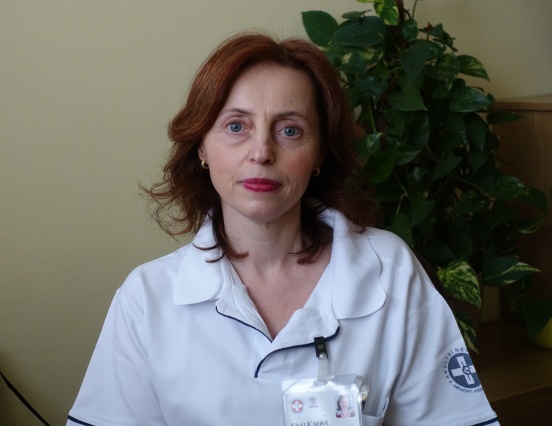
Associate Professor Pavlína Králíčková has been attracted to medicine since she was a child. She has always enjoyed studying natural sciences, and so she considered medicine as something natural that she would gradually work towards. Her mother, who as a doctor discouraged her daughter from studying medicine, also influenced her decision to become a doctor to some extent.
"My mother always talked me out of studying medicine a lot, so maybe it was partly defiance to prove her wrong," she says with a smile, describing what also motivated her to study medicine at the time. She decided to become a doctor in primary school when they started discussing the human body in science class in Grade 7. "I said to myself - this is finally something for me. I was excited about it and felt good about it. And I have to say, if I had to make the decision again, I wouldn't change."
Associate professor Pavlína Králíčková graduated from the Faculty of Medicine in Hradec Králové and after that she joined the University Hospital in Hradec Králové at the 4th Internal Medicine Clinic, where she took care of patients with haemato-oncological diseases for several years. At that time, she also started her postgraduate studies, but eventually discontinued them and preferred to spend a few years with her family. When she returned after maternity leave, she was approached by colleagues in another field who encouraged her to change her field. She decided to go into immunology and gradually began to pursue a scientific career.
"Immunology is a field in which you find a lot of questions, but you don't often get answers. And that leads you to look at what's really behind it all. When I try to conceive a new research activity, I see my patients first. I always ask myself how our potential results will benefit clinical practice," explains the associate professor. She adds that all research is related to the specific cases of their patients who suffer from rare diseases, inborn immune system disorders.
These patients quite often suffer from atypical complications associated with a malfunctioning immune system. They deviate from the normal rules and cannot be fitted into precisely described clinical units. Also for these reasons, there are no clear rules of treatment for them. "And this is a challenge for us. We are trying to determine which patient and under what circumstances is at risk for developing a particular complication and how to monitor them. We need to find the right time and way of treatment so that we don't increase the risks arising from the combination of the underlying disease and immunomodulatory therapy," she says, describing his scientific work.
"It is highly likely that a significant proportion of patients with inborn immune system disorders are sensitive to radioactive radiation and at the same time have a higher likelihood of developing cancer complications. Thus, they must undergo regular screening. In our projects, we are trying to identify parameters from peripheral blood or urine that would point to certain complications without having to frequently X-ray patients or subject them to CT scans," she says, adding that he plans to continue to focus on this topic in the future.
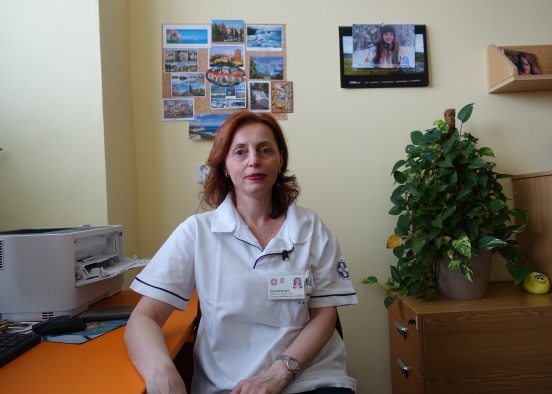
At the same time, it is not the only topic she has researched or is interested in. While in the past she and her colleagues have researched the risks in pregnant patients with immune disorders, today, in the wake of the covid-19 pandemic, they are also studying patients with immune disorders in relation to vaccine effectiveness. This is a group for whom vaccination has not been universally recommended because of perceived ineffectiveness due to the underlying nature of the disease.
"What we are finding today is that mRNA vaccines, even in patients with impaired antibody production, can work paradoxically well in a relatively favourable percentage and in some individuals approach the situation we know in a completely healthy population. This fundamentally changes our view of vaccination in patient groups with primary immunodeficiencies. The results of our research are now being finalised for publication. They look very promising, so at the moment I am proud that we have reached some very nice conclusions," says Associate Professor Králíčková about her current research. And, she adds, the last two years with covid-19, although they have brought a lot of negativity, have been a very exciting time for immunology research.
Professor Jan Krejsek, now the head of the Institute of Clinical Immunology and Allergy at the Faculty of Medicine, awakened her interest in linking science with clinical practice during her student years at the Faculty of Medicine. "He made us enthusiastic about the field and gave us an insight more than 20 years ago into where to look for the essence of many diseases and what direction many scientific activities will take in the future," she explains. Currently, she considers her scientific and human role models to be Professor Jiří Litzman, Head of the Institute of Clinical Immunology and Allergology at St. Anne's University Hospital in Brno, and Professor Anna Šediva from the Institute of Immunology at Motol University Hospital, with whom she works closely and with whom, she says, she also shares a personal friendship.
Although she has been working in science for about ten years and speaks with great enthusiasm about the research she is involved in, she admits that she has had several moments in the past when she wondered whether she should continue her scientific activities at all. "If you spend a lot of time on a project, believe in it and then maybe you don't discover anything, or if you feel that you have discovered something, but the people who review the results before they are published in peer-reviewed journals show you that your confidence is definitely not there and that there is still a lot of work to be done - you wonder whether to start again or to do something different, or to give up and do something else," she says. But in the end, it was always her attitude that helped her in such moments. As she says, she doesn't give up easily, she always tries to break things and take them as a challenge.
She herself would like to see more young women choose to study medicine and not be afraid to become doctors, even though she acknowledges that it is a very demanding profession. "But the greatest reward is the feeling that you have managed to help someone, to heal them or at least to move them one step closer to returning to normal life. And if even this is not possible, to accompany and support them in the most difficult times. All of this will make up for the countless hours you have devoted to work and further study," she says. And she adds to her scientific work: "It's not about being on the top of the scientific ladder somewhere and aiming for big goals, it's about picking up the very questions that lie right in front of you, those little sub-tasks that are directly related to the needs of our particular patients."
Doctor, why did you decide to study medicine? And why did you choose the Faculty of Medicine in Hradec Králové?
I come from Slovakia. I didn't want to study in nearby Košice or Bratislava, and Prague was too big for me, so I decided on Hradec Králové. I chose medicine because I wanted to help people and I liked biology and technical things in medicine.
What was next, how did you get to the IV Internal Hematology Clinic?
After graduating from medical school, I wanted to do general internal medicine, I was attracted to intensive care, so I started working at the then II Internal Medicine Clinic at Pospíšilova třída and about two years after graduation I started specializing in hematology and I have stayed with that until now.
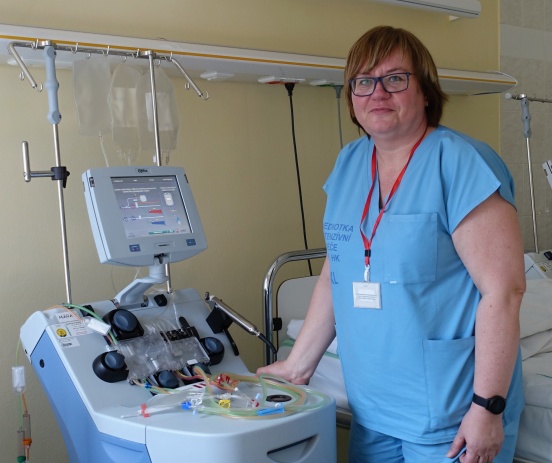
You are the head of the Separator Centre at the 4th Department of Internal Medicine – Haematology, can you introduce it a bit?
In our clinic we take care of patients with hematological diseases, non-cancerous ones, such as anemia, thrombocytopenia. Most of our work is with patients with hematological malignancies, especially leukemia, lymphomas. My specialty is the care of patients indicated for hematopoietic cell transplantation. We take care of patients from all over the Hradec Králové and Pardubice regions. The Separator Centre does not only care for haematological patients, it is an interdisciplinary centre, we treat patients from all over the country, we are one of the largest centres in the Czech Republic.
How does the separator you use actually work?
The separators we use work on the principle of centrifugation, they can separate the individual components of the blood, and we can remove pathogenic substances from the blood, such as pathological protein (paraprotein), extremely elevated cholesterol, some types of antibodies. We can significantly reduce the number of pathological cells if the number of white or red blood cells or platelets is extremely elevated. The patient is connected to the separator with a disposable set of tubing, we remove what is needed from the blood, the remaining blood is returned to the patient. Most of the time, patients who come to us in the early stages of their illness, who have, for example, acute leukaemia, have an extreme white blood cell count. If we started treating such patients with chemotherapy right away, the cells would break down and organ failure could occur. Therefore, we reduce his white blood cell count with a separator at the beginning and then start treating him with chemotherapy.
In addition, we have patients with familial hypercholesterolemia who have a genetic disorder of cholesterol metabolism, are inadequately treated with medications, and are at risk of premature atherosclerosis, myocardial infarction, or sudden death at a young age. In their case, using special methods, we can selectively remove cholesterol from the blood, thus slowing down the development of atherosclerosis. We have the largest cohort of patients with this diagnosis in the entire Czech Republic. Another part of our work is to prepare cells for hematopoietic cell transplantation, both autologous, when the patient's own cells are used in the treatment of hematological malignancies, and allogeneic cells, which are taken from related donors for our patients.
What makes you happy in your work? You probably encounter various unhappy life stories.
There are different stories, with good and bad endings. It makes me happy when things turn out well and patients can go back to their lives, families, children, work after treatment. We take care of patients in the long term, we see them at the beginning of the disease, how they cope with all the complications of the treatment during the difficult and long-term treatment and how they return to life after the treatment.
What do you do in your research?
We focus on several areas. We look at long-term changes in many diseases. We treat patients with the aforementioned familial hypercholesterolemia. We treat these patients repeatedly, some for several decades, which allows us to follow in detail the mechanisms of atherosclerosis in these patients and the effect of long-term therapy. Another research aim of our department in cooperation with the Eye Clinic was the treatment of patients with age-related macular degeneration of the retina. In developed countries, this disease is the most common cause of blindness, so our aim was to modify the rheological properties of the blood using special methods to stop the process of retinal damage and save their vision. We have experience in treating more than a hundred patients with this diagnosis. This was also the topic of my postgraduate thesis.
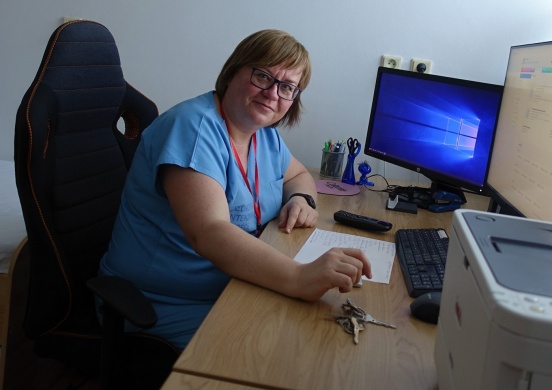
Do you have a role model in your work, someone who inspires you?
I was lucky enough to start working at the Separator Centre under the guidance of Prof. Milan Bláha, who was at the very beginning of the development of separator technology in the Czech Republic. Our centre was one of the first in the Czech Republic, back in 1976. Prof. Bláha introduced me to the various methods used at our department and patiently guided me in the beginning of my research work.
How many hours a day do you devote to your work?
Most of my work is within the hospital, routine care of patients who come to the Separator Centre but also to our outpatient clinic, with normal eight-hour working hours. But, like most clinical doctors, part of my job is to work in the haematology intensive care unit, where we look after patients undergoing intensive chemotherapy, including haematopoietic cell transplantation, so that's about four services a month, including weekends. If we are preparing a publication, a lecture, then those are the evenings when I can find some time.
What do you enjoy most about this job?
Working with patients when we manage to cure them or prolong their lives. We have patients who have been coming to us for many years, we have a different relationship with them than the person you see in emergency medicine once in a lifetime. We know the whole stories of people and their families, the illness doesn't just affect them in terms of health, they have to deal with many work, social and psychological issues.
How do you relax?
I enjoy gardening, walking in nature, travelling, skiing in winter. It's important to engage in a completely different type of activity where you can relax.
Is it manageable when one has young children?
My children survived it safely, I hope. It can be managed, but it depends on the support of the whole family, but it can be done. You have to prioritize. By working on a ward where we encounter the plight of young patients, like mothers of young children, I realise that we have to find time to relax and spend time with family, children grow up faster than we would like. Research is not the most important thing in the world.
What do you do for a living?
I try to live in a way that I am happy with my life, to do things the best I can, to be in tune with my conscience and to enjoy the little things.
What advice would you give to young women students who are considering going into science, who are on the cusp of their future careers? What should they consider?
Today, women are doing medicine in all fields. If they are studying medicine, they have to decide whether they want to have direct contact with patients or whether they want to do laboratory work or work in theoretical fields. All fields of medicine are developing rapidly, the work brings many interesting findings and encounters.
Associate Professor, when and why did you decide to pursue scientific activities? What motivated you to do so?
I am and I believe it will remain, especially as a clinician. Clinical work brings many question marks and food for thought. Searching for their nature and finding logical explanations is extremely important to me. Such an approach not only advances ourselves, but should be especially beneficial to our patients. And scientific activity is precisely the activity that offers exact solutions to clinical questions.
What do you do in particular? What does your scientific activity look like in practice and what do you enjoy most about it?
My area of expertise is perinatology and feto-maternal medicine with an emphasis on diagnostic ultrasound. Ultrasound diagnostics is then the common denominator of my research projects. These concern not only its typical role in congenital fetal malformations, but also its application in the problem of premature birth. Preterm birth is not an area where ultrasound diagnostics is significantly dominant. I came to this topic thanks to my husband, Prof. Kacerovsky, who started the research on premature birth at our department and managed to build an absolutely perfectly functioning team and incredible conditions for the scientific work of other people. It was not at all difficult to get on such a "runaway train" and join with my ultrasound erudition. It may sound exaggerated, but if it weren't for my husband, you would have no reason to do any interview with me.
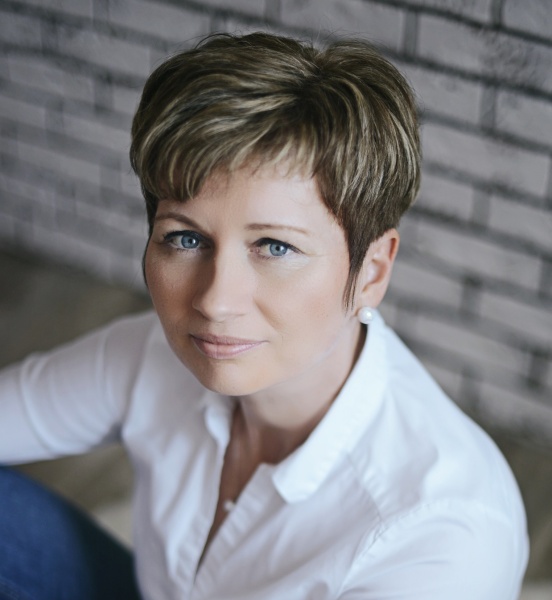
Was there ever a time when you thought you'd give up science? What helped you not to give up?
Thinking about quitting altogether probably never was. However, there was a period when we decided to drop the ultrasound projects from our department. The reason was that we only had an ultrasound machine that was primarily for clinical work, and its full load during working hours limited us in our research projects. However, this has now changed thanks to great support from the University Hospital Hradec Králové, from which we have a state-of-the-art ultrasound machine exclusively for research.
What do you consider to be your greatest scientific achievement so far? How do you see your scientific activity in the future?
I consider two papers published in the journal Ultrasound in Obstetrics and Gynecology, which is the most prestigious journal publishing papers on ultrasound in obstetrics and gynecology, to be a great success. These papers demonstrated the potential of our team also in the direction of ultrasound research and supported the purchase of the aforementioned ultrasound machine exclusively for research. This machine is not only a great opportunity but also a commitment for us. Thus, my future activities will also be in the ultrasound direction and I believe that we will expand our areas of interest beyond the issue of premature birth.
Do you have a scientific model? A scientist you admire or who has inspired you?
I have two great role models. The first is Prof. Bo Jacobsson from Gothenburg, Sweden, who is rightly one of the leading scientists in preterm birth research. He has been an invaluable professional support and a great friend not only to me but to our entire team for more than a decade. Furthermore, I must mention Prof. Torvid Kiserud from Bergen, Norway, who is the father of functional fetal blood flow testing using ultrasound. He is a man who, in his time, was able to grasp this issue in an incredibly exact way and to link clinical results with animal experiments and to base them on mathematical models. This is absolutely fascinating to me as a sonographer. Both Prof. Jacobsson and Prof. Kiserud have one important quality in common, and I respect them for that. In their scientific work, they place enormous emphasis on its high quality and its ethical principles.
Although women scientists have recently been heard more and more in the public space, for example, they appear more frequently in lists of science and research personalities in various magazines, they are still very few compared to male scientists. Do you have an explanation for this? Do women/girls have a handicap in scientific activity compared to men?
There are significantly fewer women than men in research positions in the Czech Republic. The most pronounced differences are in technical fields and natural sciences. Representation in these fields is certainly fundamentally influenced by their focus, and I would not see a gender problem there. We know that in the medical and social sciences, the ratio of men to women is quite equal. However, the interesting fact is that the representation of women has changed over the course of their careers. At doctoral level, the representation of women is fairly close to that of men, but from the end of doctoral studies onwards, men start to dominate significantly. I think that motherhood and childcare play an important role in this, which in our society still represents a greater restriction on women's employment than on men's. Nor can we ignore the pay disadvantage of women compared with men.
Dr. Kristýna Néma, a young talented physician and scientist from the Department of Otorhinolaryngology and Head and Neck Surgery of the Faculty of Medicine in HK, considers herself lucky to have chosen a field that she enjoys and finds fulfilling. In her own words, she was inspired to study general medicine by the fictional but engaging TV series Doctor Quinn.
Dr. Néma drew attention to herself during her studies at the Faculty of Medicine of the Republic of HK when she won the clinical section of the SVOČ conference in 2020. However, she had already achieved success a year earlier when she came second in the same competition. While in 2020, her research focus was on the outcomes of reconstructive eardrum surgery, her 2019 thesis was on the research of hearing status after otosclerosis surgery. "I was investigating factors that could predict postoperative healing and by which we could immediately after surgery determine with some probability the future prognosis of hearing in patients," the doctor specifies the goals of her research at the time.
In addition, she was involved in research on the implementation of laser spectroscopy in the analysis of skin tumours. "It was a very interesting project to see if the chemical composition of tumours could help in more accurately determining the boundaries of tumours, and thus contribute to more precise safety margins in their surgical removal."
After completing her medical studies in June 2021, she started working at the Department of Otorhinolaryngology and Head and Neck Surgery at the HK Hospital, where she continues her scientific activities. "My current research focuses on the voice - voice education, therapy and surgical techniques within phonosurgery." And why did she get into this field in the first place? "A key moment for me was an internship abroad at a hospital in Braunschweig, Germany, where I first became fascinated and enthusiastic about the field of ENT, and subsequently applied for voluntary internships at the University Hospital as well."
Kristýna Néma has set many goals and plans for herself in science, but she realises early in her career that she may not be able to achieve everything. However, she believes that she can apply new research findings to clinical practice. "First and foremost, it is important for me to see what impact new knowledge can have for practical use in treating disease, so that science can help improve the health and lives of our patients." She clearly enjoys her work and is becoming increasingly convinced that studying medicine and then becoming an ENT specialist was the right choice. Moreover, she says she is lucky to have people around her who encourage her and stimulate her curiosity while she works. "It is the team where new ideas can emerge, which can then be turned into reality. At the moment, I am inspired by all the staff of the Department of Otorhinolaryngology and Head and Neck Surgery, headed by Prof. Viktor Chrobok."
The young scientist's normal day starts at 4:30 a.m., first with exercise and then with preparation for the upcoming workday. At the hospital, she starts at seven in the morning, attending to her patients, ambulances, ward work, the workload is different every time. Keeping a regular sleep schedule helps her to cope with all the demanding activities. "Of course, I can't do it on duty, but on a weekday I try to have everything done by 10 p.m."
Outside of work she finds time for hobbies, she is interested in music, playing the piano and singing, she also enjoys sports and learning foreign languages. She also enjoys yoga, sauna and nature walks. And what advice would she give to young women scientists who are considering pursuing scientific research? "Certainly this will not only apply to women and students, but the most important thing is to persevere while choosing an area that interests one and finding a liking in each area of research."